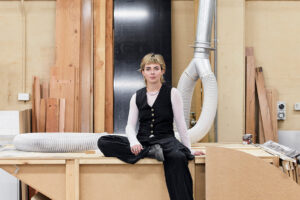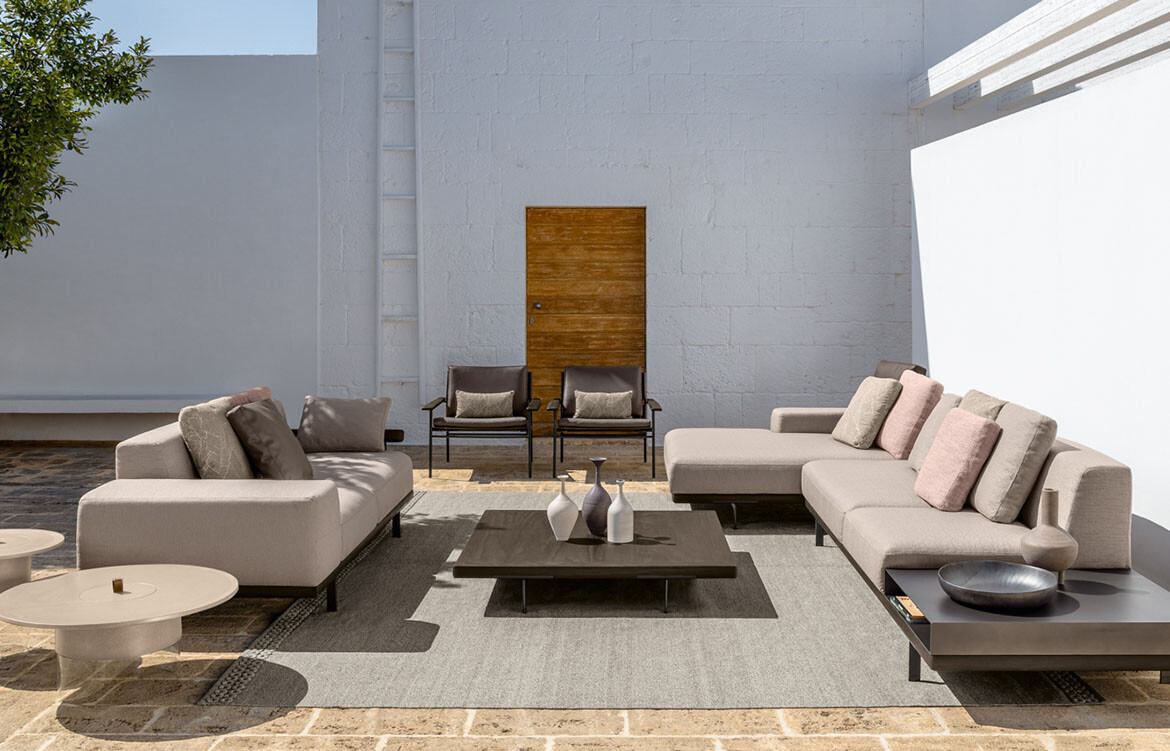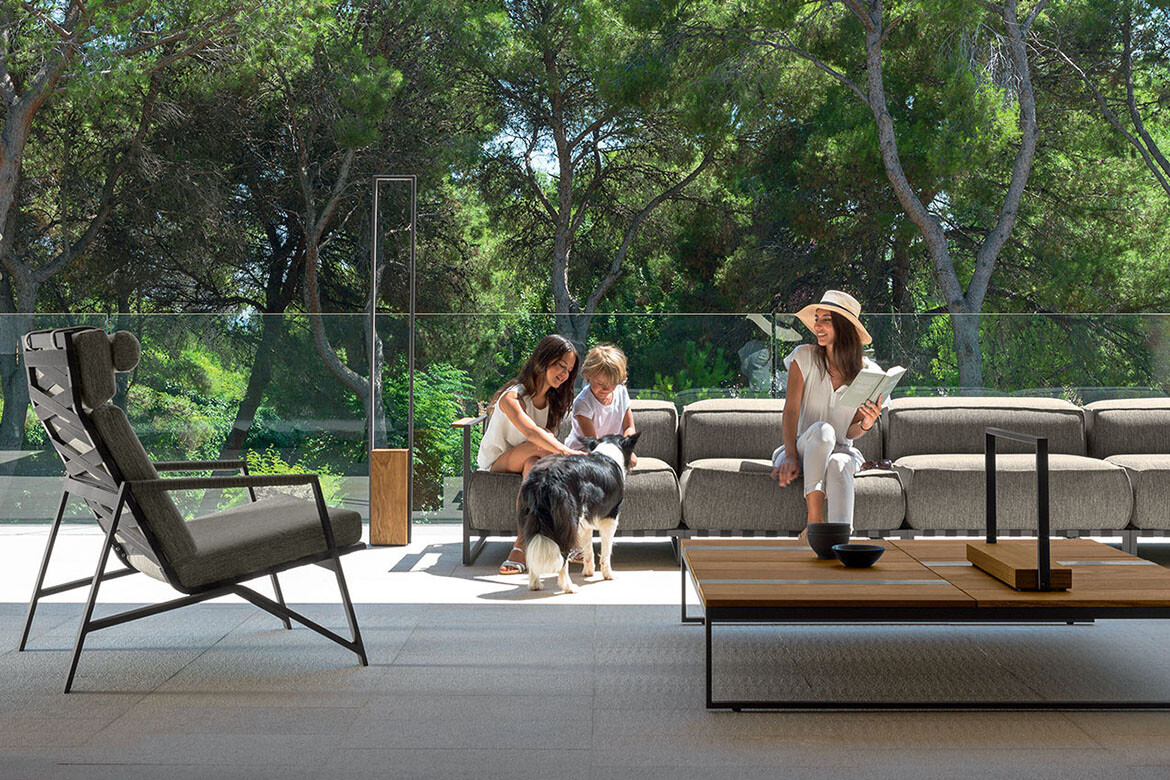Habitus Living: What inspired you to start ZETR?
Garth Elliott: The lack of aesthetic options available in the electrical fitting space in particular switches and outlets. A strong personal appreciation for a minimalist aesthetic and clean lines. A desire and personal satisfaction of creating a unique product, I have worked in the service industry for so long and there is something about the physical. A sense of adventure that starting something new provides. Feeling like I could do something more than what I was already doing. Having a good idea is very different from actually pursuing it. I have always had a sense of drive, and I’m not comfortable sitting.

The Melburnian by Edition Office. Styled by Bea Lambos, photo by Dave Kulesza
How does design influence your company, but also your life in general – especially having been through the design process?
Garth: When you walk into a space or a place, what do you process and register? What energy do you take in, what makes you feel impressed or at ease and what do you respond to negatively in the space? For me, design is about registering awareness of what surrounds us. It influences the decisions I make, and the way I look at and appreciate objects in the world. An appreciation for detail. This translates to my approach in our products and our ethos for ZETR.
When designing our products there is always a clear awareness of a problem facing architects and designers within electricals. We then attempt to unpack the particulars of that problem, shaping a functional solution that looks minimal, simple and as cool as it possibly can. The detail is so granular, changing a fraction of a millimetre or a fraction of a degree in a small product, shapes the entire balance.
Then there is also the slightly more glamorous side of ZETR. Some projects that are solely aesthetically driven, such as a pendant fitting or boardroom table, projects that provide drive for our other creative side while maintaining a similar level of materiality associated with our electrical product ranges and stepping away from the fraction of millimetre degrees we work in with electrical components.
Can you speak about manufacturing, what is that like?
Garth: I suppose first and foremost we are manufacturers, and we hand-make many of our products in Sydney. For ZETR, manufacturing of a new product range is a long engagement, our products are unique in shape and design, so each component needs to be tooled or machined individually. These components then fit together to make a greater assembly of one product.
There is only marginal room for error when tooling with steel moulds, so the design process is always far longer than anticipated to ensure we get the correct result. If we are working with external manufacturers both at home and overseas then we need to ensure they are value-aligned, and we will have a strong long-term working relationship

Hornsby Heights by Cove Made. Styled by Holly Irvine Studio, photo by Ryan Linnegar
What has been the biggest hurdle/steepest learning curve in starting ZETR?
Garth Elliott: I believe from the beginning it was creating awareness of being a small brand in such a mass-produced market. There were over two years of face-to-face meetings with architects and designers to create traction for the brand and bring products to specification. Luckily for ZETR, I feel we were so well received by the design community, and for that we will always be super grateful and appreciative.
There was also the process of re-educating people outside the design community. Not only helping people to understand there is another solution for installation and finishes but also understanding the solution is not that difficult. ZETR is still only four years old so we are still of course continuing to meet many new people who are unaware of the brand, as our product offerings are diverse, the education process will continue for us.
Alyssa Sheldrake: Electrical design is such a challenging and intricate industry to crack that is full of big international players. We wanted ZETR to be an electrical brand made specifically for architects and interior designers, or people with a similar level of understanding.
It involved such a detailed design process that respected and listened to the needs of the architectural industry. It involved re-educating segments of the market on the importance of electrical elements in the specification. As an integral part of the experience and aesthetic of a space, something that has such high touchpoints, electrical switches really do require the same level of design intent as you would for lighting, hardware and other finishes.
We view electrical as a detail within an installation. It should complement the materials so meticulously chosen and then work as a quiet detail rather than acting as an intrusion. That education piece has been the biggest yet most rewarding challenge for ZETR.
This has been the basis of the design of our electrical products as they evolve. Each product needs to answer an electrical need for architects and interior designers. It could either challenge the aesthetics of electrical in a space, challenge where and how we experience power, or the expectations of what we as an electrical company can do.

The Melburnian by Edition Office. Styled by Bea Lambos, photo by Dave Kulesza
How do you balance personal and professional life?
Alyssa: It’s taken us many, many years to balance home and work and to be honest, we have come to accept that it’s never going to be perfect and that’s ok. The year we started ZETR we also had our two children Coco and Van who are 17 months apart so those first few years of the company and family life were a chaotic blur mixed amongst constant travel, meetings and events to just get the product out there to the right designers. We were never willing to give up being present at home and doing the work at home, so naturally the kids had to become part of work, and we have been running with this mantra ever since.
Now we are learning about setting a realistic pace, adjusting that pace with the needs of our kids and our business so it’s ‘semi’ manageable. Some days the kids just need us present and that’s ok, other days we spend long hours in the studio or workshop on new product designs, team workshops and conference calls with kids in tow colouring behind us on the floor. It’s a chaotic bliss, but we like to hope that it’s teaching our kids ambition, creativity, and dedication, and it’s teaching us patience, pace and to not take ourselves so seriously [insert child pulling faces in ZOOM call behind us].
Garth: Haha it seems to be more of an amalgamation than balance. We are fortunate that we can work alternate days so we can be home with our family, but you still find yourself wrestling with the kids while on a video call.
We try to limit the number of hours we work; we are both super social so we try and bring this into our work environment when possible, but I also think it’s important that we have additional self-time. I get up before sunrise each morning to try and spend as much time in the ocean as I can. This is both for natural inspiration and also clarity, for me I can spend so much time obsessing over things around me like shapes, colours, textures and patterns it becomes a little obsessive and can start to consume you.
What’s something you wished you had known before setting out on this career path?
Garth: If anyone understood how difficult the product start-up process was they wouldn’t have commenced it.
Everything takes time. You can learn as you go but patience is required.
Alyssa: Sometimes the more you know, the less risk you take. The unknown is an interesting and exciting place to be both in design and business. Electrical is a difficult ride. If we had known the complexities of designing and manufacturing electrical, we probably wouldn’t be on this path.

Hornsby Heights by Cove Made. Styled by Holly Irvine Studio, photo by Ryan Linnegar
How do you both work together, are there set roles?
Alyssa: I have this clear memory of being eight months pregnant with our daughter Coco in our tiny Bondi apartment in the heat of summer, sitting on the back of a toolbox in the garage watching Garth hand making prototypes, installing samples into plaster, grinding back stone amongst a room full of surfboards. The both of us drawing up plans, writing websites, in that garage. There has been a beautiful level of honesty and respect between us with work, because it’s our passion, it’s our lifestyle and work is so intertwined with our lives so there is never really an ‘off’ switch. The honesty we can provide each other in the design process, the ability to understand and be respectful of each other’s strengths and weaknesses in the business, has really driven the business values and ethos since the beginning.
We have two very separate roles now, and hilariously sit apart from each other to create some ‘healthy distance’ throughout the day. Garth managing the design and products to market, and myself managing the business. By removing the burden of the everyday business management, it allows Garth the headspace and quiet for product and design.
Another highlight for us has been meeting the industry together as a couple. The vibrancy we can bring to a room and the energy we provide to our team when we are together is another level.
ZETR
zetr.com.au
We think you might like this story about Iwan Iwanoff’s legacy photographed by Jack Lovel












